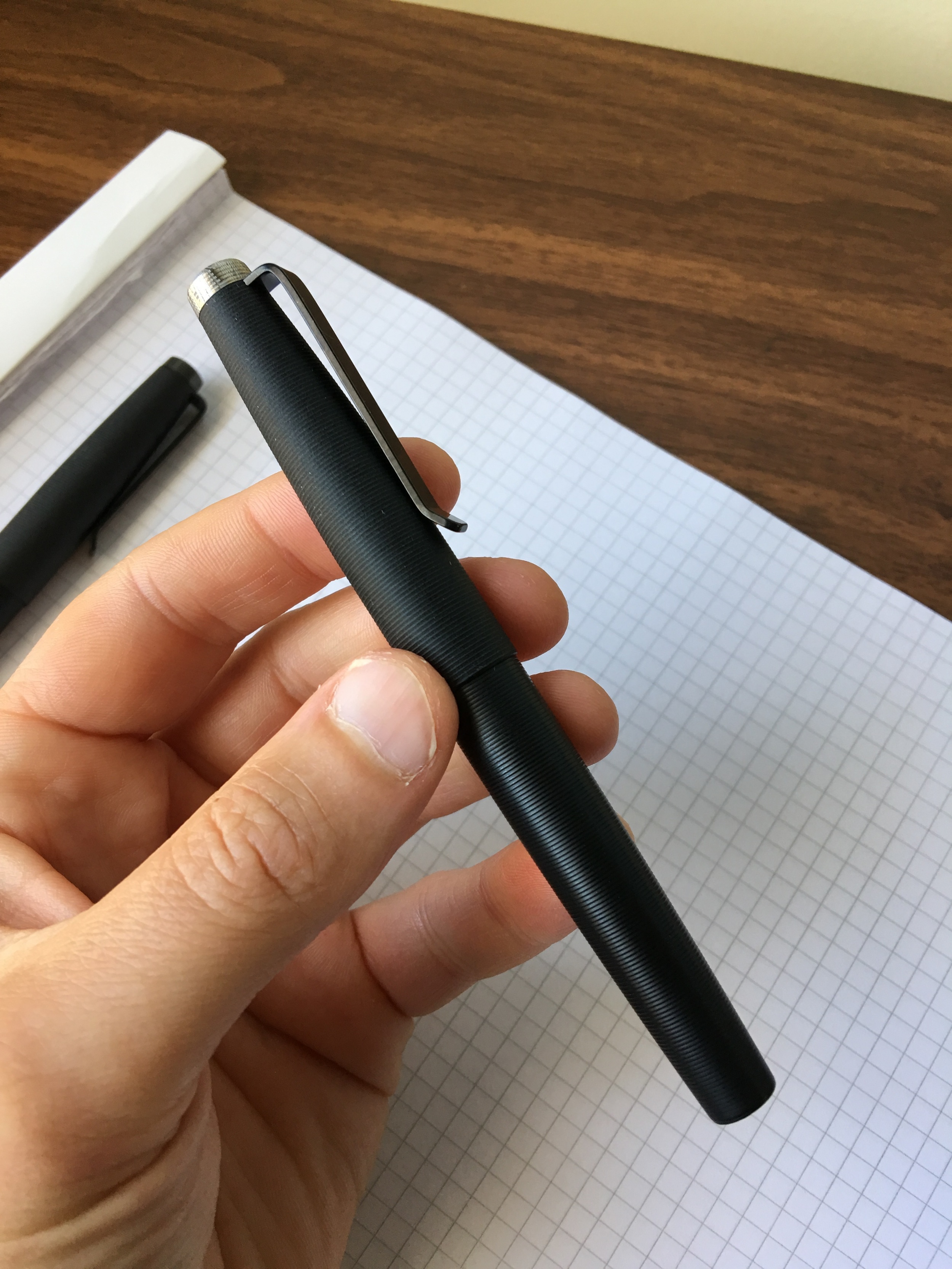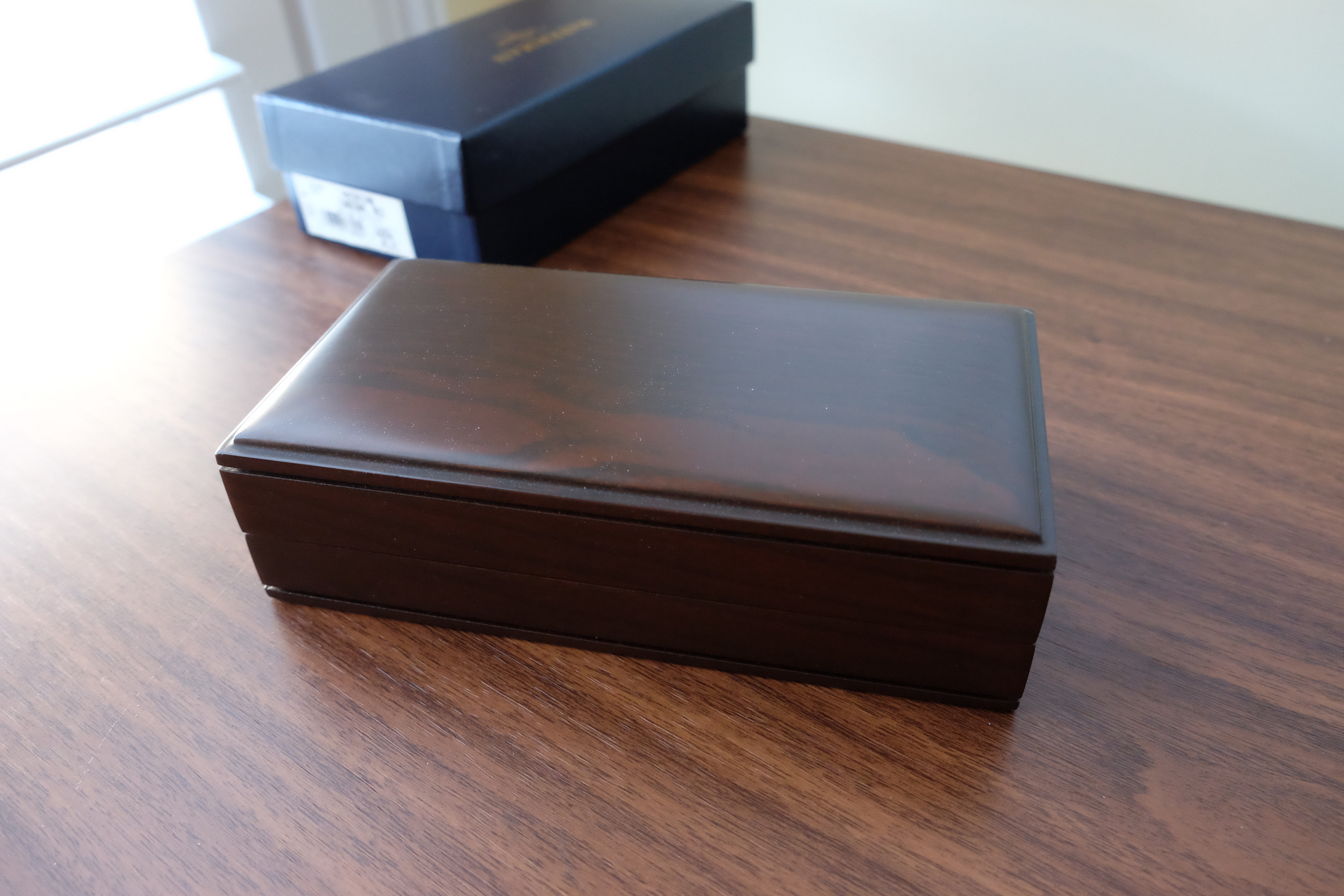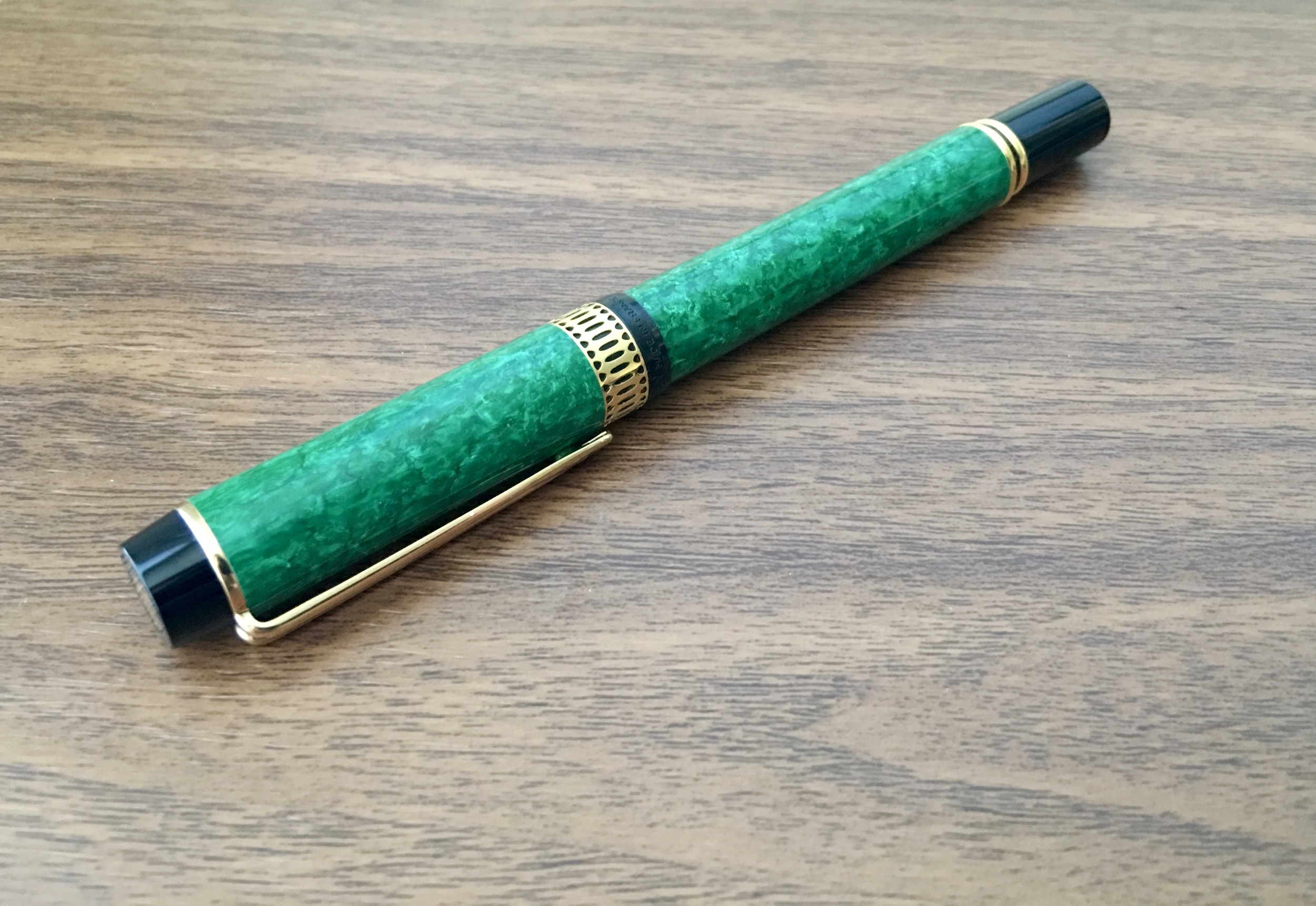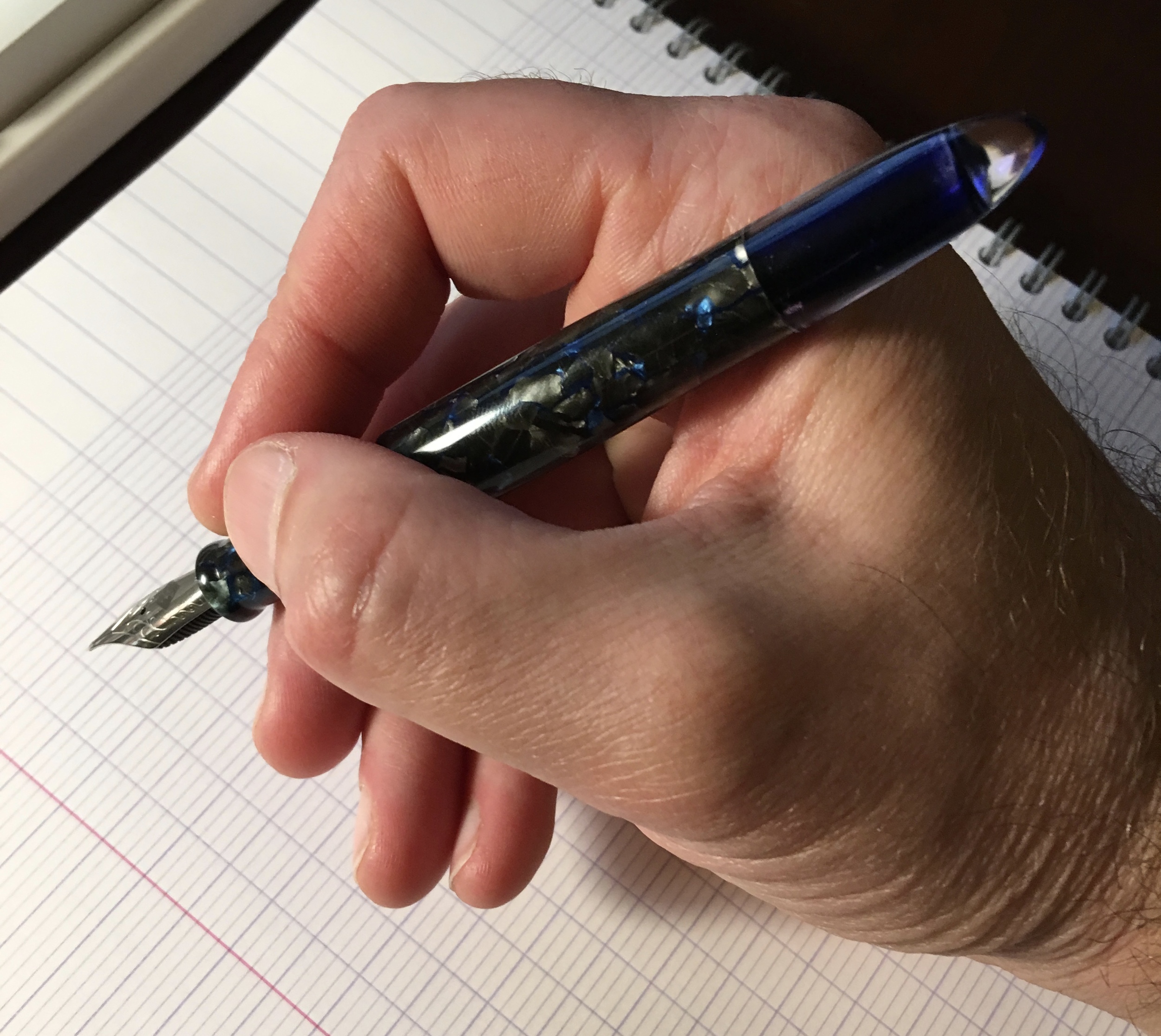The Tactile Turn Gist fountain pen was one of the most hyped Kickstarter projects of the past year (well, at least in the stationery world). Due in no small part to the previous successes of its creator, Will Hodges, the Gist blew away its $50,000 fundraising goal, drawing over $129,000 in total pledges. So now that I've had the final result in my hands for about a month, how did the pen turn out? Short answer: the Gist is well worth the money, especially if you like pens made from unique metals, but it's not without a couple hiccups.
Background
For those of you unfamiliar with Tactile Turn, the company is small machine shop and design studio located in Richardson, Texas and run by machinist and designer Will Hodges. Will's prior work has included his Mover and Shaker machined pens, since discontinued except for certain limited models. I reviewed the Mover a while back, and it's a favorite daily carry-type pen of mine.
Somewhat unrelated to stationery, Tactile Turn also ran a Kickstarter for the "Parer" and "Pruner" machined razor handles compatible with Gillette Mach 3 and Fusion cartridges. (Now if only they could do one for Harry's blades....)
Design and Build
My two Tactile Turn Gist fountain pens, in zirconium and Damascus steel.
On to the Gist. Overall, the Tactile Turn Gist is a well-designed, functional fountain pen that should wear well and stand up to whatever you might throw at it. Whereas most Kickstarter pens are crafted from metal or wood, Will decided to do something different, opting for fiberglass-reinforced plastic called polycarbonate, better known by its trade names Makrolon or Lexan. Those of you familiar with Lamy's flagship "Lamy 2000" fountain pen may recognize the material-it's very similar, if not identical, to what Lamy uses in the 2000. Because the Gist is a cartridge/converter pen, however, the body is very light and lacks the weight added by Lamy's piston-filling mechanism. This could be a good or bad thing, depending on your preferences, but you should understand that the all-polycarbonate Gist is VERY light. If I hadn't opted for the metal section on both pens that I ordered, the pen would probably be too light for me to use comfortably.
A look at my "blacked out" Tactile Turn Gist with Zirconium section.
But let's talk about the metal section. With the exception of the Lamy Studio, I generally dislike all-metal pens because I find them too heavy to use for extended periods of time. Not so here. The section, like the body of the pen, is textured, which minimizes slippage.
The Tactile Turn logo engraved onto the zirconium finial. You can opt for logo or "no logo". I wish I had gone for the latter. I think it would have given the pen a cleaner look.
You can customize your polycarbonate Gist fountain pen with a wide array of different metal sections and finials. Materials include the not-so-uncommon stainless steel, titanium, copper, brass, and bronze, as well as rarer materials like zirconium and damascus steel. I couldn't pass up the zirconium or damascus options, so I backed the Kickstarter for both pens. If you're a fan of all-metal pens, you can purchase the Gist in stainless steel, titanium, brass, bronze, and even zirconium (which comes with a pretty price tag).
The Tactile Turn Gist comes with multiple "trim options." I opted for Damascus steel (top) and zirconium (bottom).
As I mentioned, the pen is well-built with an eye towards heavy daily use. The cap posts well, which I prefer, and I like the length of this pen both capped and posted. It sits well in a shirt pocket at work, and is well-balanced in the hand (more on that below). Tactile Turn used an excellent black metal clip, which not only looks great but clips the pen securely to whatever you use to carry it, whether that be a pen case, bag strap, or shirt/jeans pocket.
The clip on the Tactile Turn Gist will ensure the pen doesn't go anywhere.
Some people have been having issues with the threads being cut too tight. The threads on the Gist are "acme" threads, meaning they're cut thicker than is typical on a pen. This allows the cap to screw on securely, but I wish it took maybe one less turn to remove the cap. The threading on one of my pens is also slightly off: the cap is too tight, which has caused a small hairline crack in the cap lip. Nothing that makes the pen unusable as long as I'm careful not to overtighten the cap, but I'll eventually have to send this back to Tactile Turn for repair or a replacement cap. I've not read anything that suggests these problems are widespread. The threads on my other pen are flawless.
Writing Experience
The stainless steel Bock nib that shipped with my zirconium Gist.
As I mentioned above, the Gist is a well-balanced fountain pen, which makes it comfortable to write with for long periods of time. I prefer the pen posted, mainly due to the light weight of the polycarbonate. The pen uses the cartridge-converter filling system, but instead of the standard international converter, the Gist uses a smaller converter that appears to be the one manufactured by Monteverde. This choice of converter is an aspect of the pen I'm not crazy about: the Monteverde converter is shorter, so it has a relatively small ink capacity, and doesn't feel very durable. Also, if you lose the converter, if it breaks, or if the manufacturer ever stops making this part - and you can't find a replacement converter that fits - you might be forced to resort to refilling short international cartridges with a syringe to continue using the pen.
The converter that ships with the Gist.
The Gist uses Bock nibs, which on the whole are good quality but can be temperamental. Lots of people like them, but my experiences with their steel nibs have been a mixed bag. I've had better luck with Schmidt and JoWo. The steel Bock nib that shipped with my Gist is no exception: the tines were misaligned and the nib was dry. Eventually, after some tuning, it will write at an acceptable level, but it needs some work.
I enjoy writing with Bock's titanium nibs, though be warned that you'd better have nice paper that can stand up to how wet these nibs tend to write. For a writing sample, check out my review of the Conid Bulkfiller, which uses the same nib. I had no issues with the titanium nib on my Gist.
What would I like to see in the future? A rhodium-plated gold nib option, which Conid offers on their pens. I'd consider upgrading my pens to the gold Bock nibs, but I'm not a fan of yellow gold on black pens.
Takeaways
I've enjoyed using my two Gist fountain pens, and overall I think they're solid additions to my arsenal. Tactile Turn's textured/ribbed design is unique, and when picking out my pens I really enjoyed being able to customize the design with the various metals available. If I had to pick a favorite, it would be the polycarbonate/zirconium combination.
In terms of the price/value proposition, you're paying a bit of a premium for the design and the rare metals, such as zirconium and Damascus steel. The list price of the all-polycarbonate model starts at $99.00, with a zirconium section starting at $149 and a Damascus section starting at $179 (though you can add metal finials to your all-polycarbonate pen for a little less). Adding a titanium or gold nib will further increase the cost of the pen off the base price.
For someone making a first purchase of a pen in this price range, my overall recommendation would still be the Lamy 2000, which is a piston-filling fountain pen with a gold nib. Even with Lamy's own nib quality control issues, I've had fewer issues with the 2000 than I've had with the Bock steel nibs. If, however, you're like me, and a nut for Damascus steel and "blacked-out" metals like ruthenium and zirconium, the Tactile Turn Gist should definitely be on your radar screen because you won't find anything else like this on the market.
Where to Buy
Tactile Turn sells the Gist fountain pen directly through its online store, though the company has started to sell pens through retailers as well. Vanness Pens, one of my sponsors, carries the Gist, though as of the time of writing they are sold out of the "All Copper" and "All Polycarbonate" models.
Further Reading
Ed Jelley took what was perhaps the first look at the Tactile Turn Gist, and also shot the Kickstarter photos. Brad Dowdy at the Pen Addict also reviewed some pre-release prototypes. For a review that looks at the pen from a somewhat different angle (as part of an everyday carry instead of a pure "pen review"), check out this review from Everyday Commentary.
DISCLAIMER: I purchased the pens featured in this review with my own funds, for my own collection, at the full Kickstarter price.

















